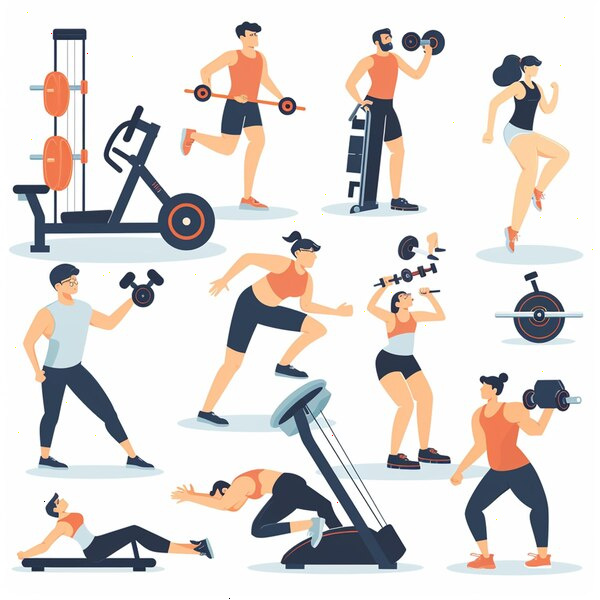Mastering Cardio for Enhanced Endurance
Cardiovascular exercise, often simply referred to as cardio, is a cornerstone of fitness and overall health. Its primary benefit is improving cardiovascular endurance—an essential component for not only athletes but for anyone looking to sustain energy levels throughout daily activities. Mastering cardio can lead to profound improvements in endurance, leading to a healthier, more active lifestyle.

To begin with, it is important to understand what cardiovascular endurance entails. It refers to the ability of your heart, lungs, and blood vessels to deliver oxygen to your body tissues over prolonged periods. This ability is crucial not just for running marathons but for any activity involving sustained physical effort—from cycling and swimming to simple playing with your kids in the park.
One of the keys to mastering cardio is consistency. Regular cardiovascular exercise conditions your heart and lungs to work more efficiently. Rather than engaging in sporadic, high-intensity workouts, aim for a regular routine that includes a mix of moderate and vigorous activities. For many, this might mean jogging three times a week mixed with high-intensity interval training (HIIT) or a group fitness class.
Variety in exercise is another crucial aspect. Different cardio exercises target distinct muscle groups and have varying impacts on the body. Incorporating activities such as running, swimming, cycling, or even dancing can prevent workout boredom and target a wider range of muscle groups, further contributing to increased endurance. Moreover, cross-training can help reduce the risk of injuries by avoiding overuse of specific muscles.
Progressive overload is a principle that can be effectively applied in cardio workouts to build endurance. This means gradually increasing the intensity, duration, or frequency of your workouts. For instance, if you're comfortable running three miles, try to extend it to four. If you're biking at a steady pace, try incorporating intervals of sprints. Incremental increases challenge your cardiovascular system and stimulate adaptations that enhance endurance.
Incorporating rest and recovery is another important aspect often overlooked in cardio routines. It's during rest that the body repairs itself and grows stronger. Adequate sleep, hydration, and nutrition are essential components of recovery and should be prioritized alongside workout schedules.
Nutrition plays a significant role in cardiovascular endurance. A balanced diet rich in complex carbohydrates, lean proteins, and healthy fats can provide the necessary fuel for prolonged activities. Hydration is equally important—dehydration can severely impact performance and recovery. It's essential to listen to your body's cues and adjust your diet and hydration as needed.
Additionally, mental stamina and focus are integral to mastering cardio. Practices such as mindfulness and visualization can be beneficial in maintaining motivation and improving performance during exercise. Visualizing success, setting attainable goals, and celebrating milestones can keep you engaged and committed.
Technology can be a helpful ally on your journey to mastering cardio. Fitness trackers and apps can monitor your progress, set goals, and remind you of rest days or intervals. They also provide feedback loops that can encourage you to push your limits progressively.
In conclusion, mastering cardio for enhanced endurance is about consistent practice, integrating variety, understanding your body's needs, and employing mental strategies along with smart technology use. Improvements in endurance not only enhance athletic performance but contribute to a more energetic and healthier daily life. By focusing on these key aspects, anyone can boost their cardiovascular endurance and experience the holistic benefits it brings.